May you live in interesting times, or just another AI hype cycle

Notes for Young Voices’s Feb 16, 2023 event: “The World with ChatGPT: Will Humanity Fit In?”
Why now?
Why are we talking about AI, again?
Just five years ago, in a 2017 report, PwC made the claim that 38 percent of U.S. jobs were at risk of automation by 2030. Also in 2017, McKinsey released a report estimating that 16 million to 54 million jobs would be lost by 2030. While that is still seven years ahead, there should be inklings of a trend.
But that’s hard to find in the data.
The total number of job separations is slightly up over the long-term trend, but that seems to be driven by the wage market and the bounce back from COVID.
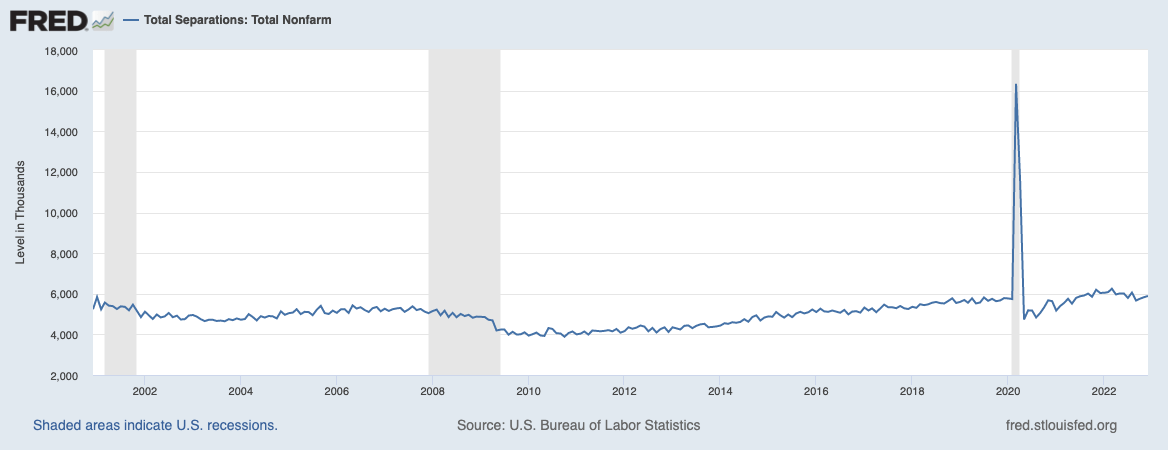
Information workers are getting laid off.
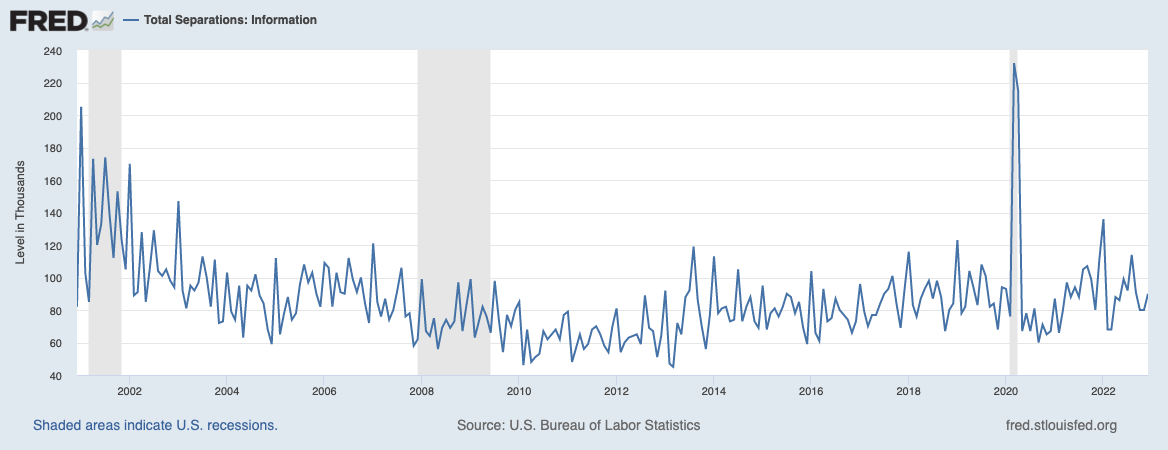
But when I pulled apart the trend from all of the seasonal effects, it looks like a repeat of the 2007 decline. And that one was well below the dot-com bust.
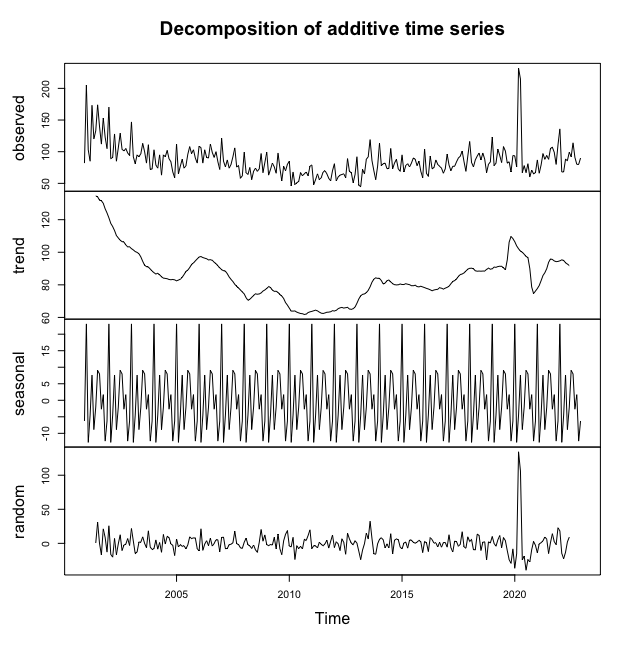
The Census only just began releasing data on expenditures for robotic equipment. Even still, the ACES data on robotics seems to suggest that information is seeing a decline.
Total factor productivity should be up as well If AI were on its way. But that too hasn’t budged. It is still on a trend that it began charting back in 1971.
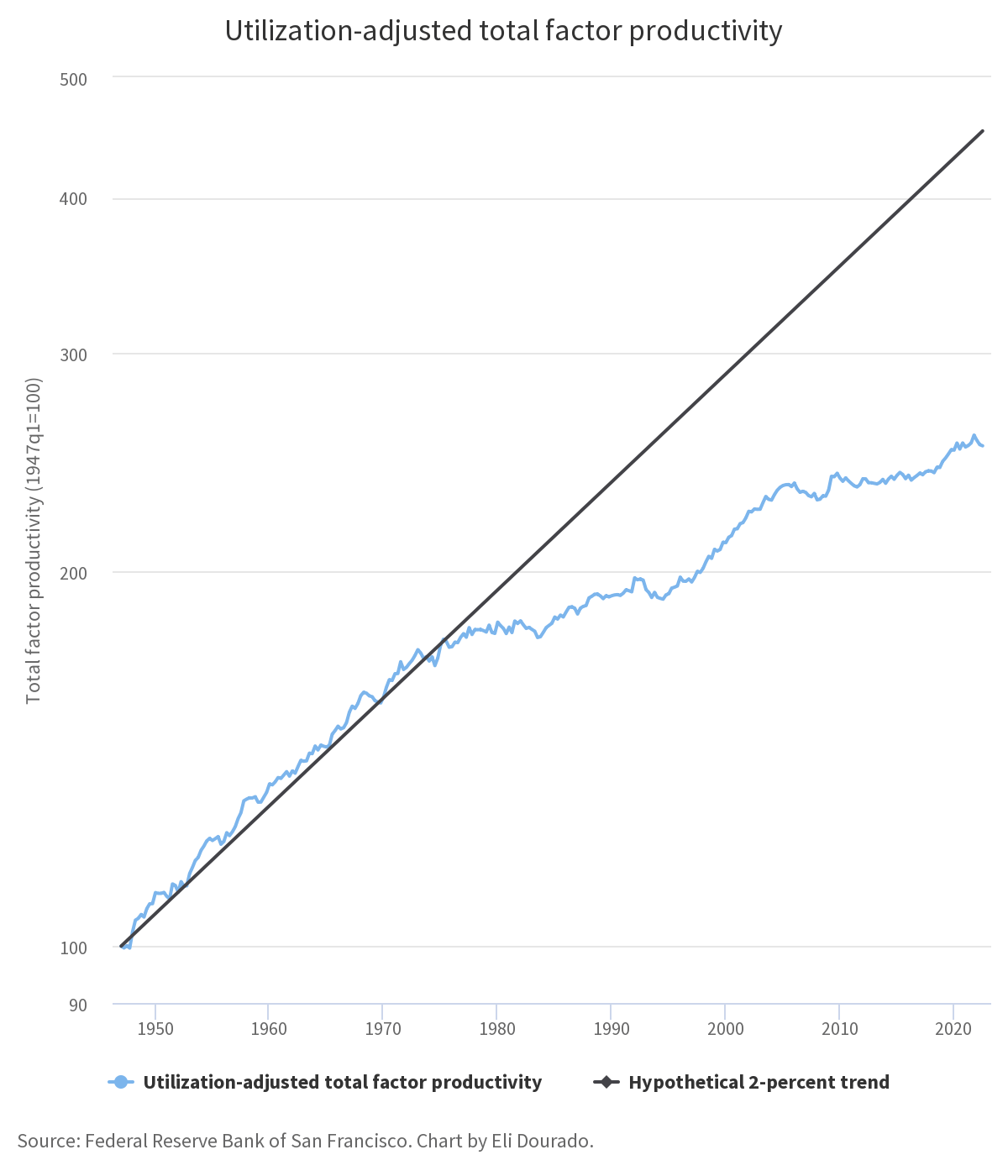
Meanwhile, labor productivity has reverted to a long-term trend.
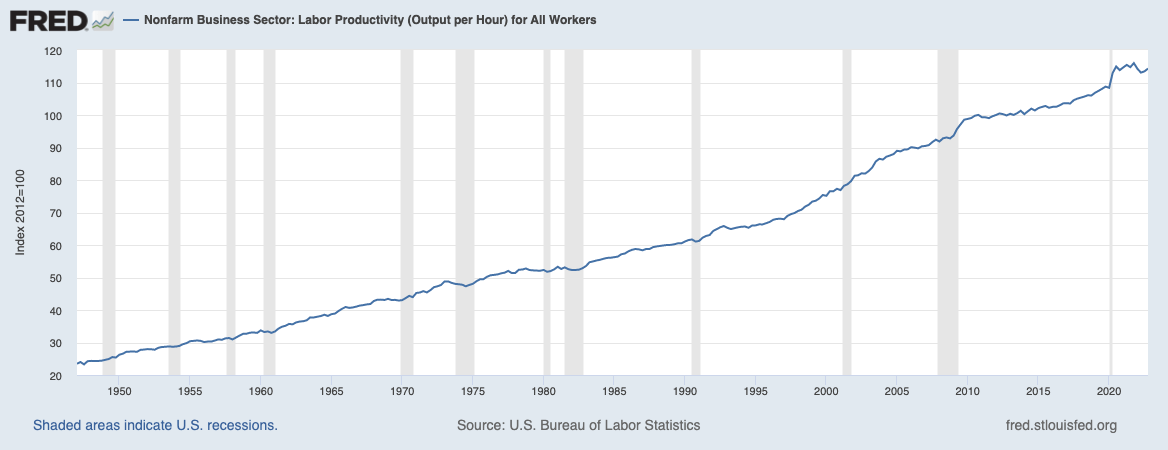
The dynamics at play here are fascinating.
As David Autor explains in a must read paper on the topic, the demand for service jobs and other manual task-intensive work appears to be relatively income elastic (Clark, 1951; Mazzorali and Ragusa, 2013). This means that when aggregate incomes go up, there is an increase in demand for these jobs as well. When all is said and done, computerization should indirectly raise demand for manual task-intensive occupations because it increases societal income.
Economists call it Baumol’s cost disease and it helps to explain why ATMs drove bank expansions, instead of decreasing them, and it explains why orchestras are paid more today than in 1800 even though they haven’t gotten any more productive.
As Hotte et al explain in “Technology and jobs: A systematic literature review,” (2022)
Overall, we find across studies that the labor-displacing effect of technology appears to be more than offset by compensating mechanisms that create or reinstate labor. This holds for most types of technology, suggesting that previous anxieties over widespread technology-driven unemployment lack an empirical base, at least so far. Nevertheless, low-skill, production, and manufacturing workers have been adversely affected by technological change, and effective up- and reskilling strategies should remain at the forefront of policy making along with targeted social support systems.
Ok but maybe we’re on the edge of a transformation. Maybe transformers are different. Maybe ChatGPT is different.
First off it will take time to get integrated into firms. It took time with electrification. As economists Andrew Atkeson and Patrick J. Kehoe summarize it, “At the beginning of the transition [to electric power], manufacturers [were] reluctant to abandon [their] large stock of knowledge to adopt what, initially, [was] only a marginally superior technology.”
The same was true of the tractor as well. It first got used in the 1920s in the Wheat Belt of North Dakota, South Dakota, and Kansas, then got adapted for use in a second wave from 1930 to 1940 in the Corn Belt of Iowa, Illinois, and Nebraska.
Second, even if the tech is great, institutions of all kinds like companies, governments, and nonprofits will likely struggle to implement these new processes. Because just as soon as technology allows for new things to be done, the pressure will be on the organizational side to actually make it work. What was needed back with electricity still remains true with AI. We are going to need “organizational and above all…conceptual changes in the ways tasks and products are defined and structured.”
Every new and innovative way of doing something comes with costs. If we want to understand what’s ahead we should be clear about those costs. And we are going to need to compare it to the gains we should reasonably expect from this tech.
I think Richard Powers actually offered a warning in a roundabout way when he said,
The reason why the public is seduced by virtual reality, why it has embraced this fantasy of the disembodied self, is the desire for the ahistorical, the disembodied will. There is something in us that loves the idea of placing ourselves into immortal space, where our wishes can be met without the drag and impediment of stuff.
We shouldn’t be seduced by AI. We should be concerned with the drag and impediment of stuff.
First published Feb 21, 2023